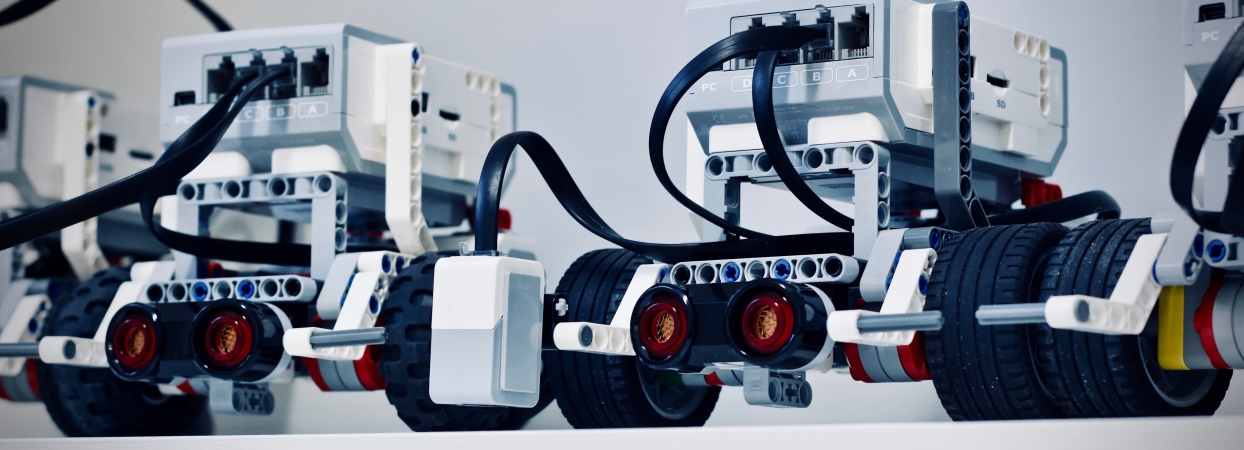The global robotics market is constantly growing which gives plenty of businesses great opportunities for various public relations efforts. The goal of every business in the industry should be to tell their stories to the target audience to attract more consumers.
Robotics and various products from robotics companies have been excessively used by consumer, commercial, and other industrial businesses, which gives robotics companies plenty of opportunities for utilizing strong public relations strategies and campaigns.
The first thing that companies and their robotics solutions need to take into consideration is the growth of their industry which, according to the International Federation of Robots, in 2020 a record of 2.7 million industrial robots started operating in different factories around the world, which is over a 10% increase from a year before that.
However, beyond robots being used in industrial companies, there are plenty of different ways that robots can be used in other services such as real estate, home healthcare, retail, and hospitality. That means companies in the robotics industry have plenty of opportunities to promote their solutions to the target market.
Storytelling
Good stories should be inspirational and captivating while giving consumers a sense of relatability and relevance. That means companies looking to create and tell their stories should be looking into their brand narrative as a way to create more loyalty and goodwill with the customers, including stories about how a business overcomes any adversity or obstacle.
This way, journalists and outlets will be able to ask companies better questions about how a business came to be, or questions regarding the unique selling point of a business, its history, and the careers of the founders.
Companies can also talk about the inspiration or the concept behind their creation, provide journalists with more details about them, and always include their key messages.
Data and Statistics
Companies in the robotics industry will always get questions about data and statistics. That means, when a company in the robotics industry is trying to tell its story, it should find angles on how a business might be disrupting the industry in quantifiable terms.
Additionally, companies in the industry should also always be ready to answer questions about any funds they’ve raised, revenue they’ve earned, the number of partners that are on board, or the number of signees within a specific time period. This type of information can make a company’s story a lot more compelling, because it’s going to be supported by real data and evidence, and the best way to showcase any data is through storytelling.
Timing
Companies in the robotics industry should start implementing a sound PR strategy before a business is launched. This way, they get the advantage of setting up any tactics and campaigns ahead of time, so by the time the company launches, it can immediately start taking advantage of any media coverage opportunities.
Additionally, this type of strategy gives companies a lot more opportunities to consult with journalists, and give their expertise, opinions, and advice, so that they can form better strategic and trusting relationships with relevant outlets.
Content
Companies have to invest in making high-quality and valuable content, especially in industries like robotics, so they can cut through the noise of the crowded market.
Companies can use their tools and technologies to create interesting and attention-grabbing pieces of content such as infographics and videos, that can convey information in a good way to both consumers and media outlets.
Benefits
It’s relatively easy for companies in the robotics industry to get caught up in the technical specifications of their solutions, but the only people that pay a lot of attention to those specifications are people in engineering or technical industries that are also following those types of publications or websites that share such information.
Similarly, although this type of information might be interesting to engineers, the most important information that a potential customer needs to know is what the solution can do for their business or everyday life.
For instance, companies should highlight how the workplace injuries have been reduced in numbers since their solution started replacing repetitive motions or heavy lifting, or the number of packages that are moved through the facility per a specific time period compared to when people were doing the same tasks.
However, it’s important for companies to be careful in the way that they discuss the reduction in the number of human workers and the savings in terms of labor costs for companies because these are very sensitive topics that are generally associated with diminishing job opportunities for people.
That’s why companies should instead be focused on the end benefits that consumers can get from their solutions instead of the technical specification. In fact, it’s smart to include the technical specifications in a separate document for anyone that’s interested, instead of including that information outright.
Whenever possible, all of the benefits that consumers can get from the solution should also include use cases from past customers, even if they are just briefly described because of any potential nondisclosure agreements. When companies can focus on the advantages that customers can get from their solutions, they’ll be able to get ahead of their competitors that tend to highlight all of the features of their robotics solutions.
Human factor
Plenty of businesses use robots in different ways simply because they’re a lot more efficient at carrying out daily tasks compared to regular human employees. A great example of this is car manufacturing plants, where people used to do tasks such as spot welding which was very repetitive or assembling smaller parts, and these days all of those tasks are done by robots.
Not only that but robots can also work nonstop without getting exhausted or suffering from repetitive stress injuries that happen to human workers.
Although they need to recharge batteries, mobile robots are still a lot more effective at repetitive daily tasks. However, replacing people with machines is a very touchy subject which means any company trying to invest in PR efforts in the robotics industry also needs to recognize how sensitive this topic can be.
Any conversation regarding improvement in productivity or efficiency needs to also include the human element of doing such tasks, and companies can elaborate on how repetitive work can lead to a lot of stress injuries for employees while utilizing robots can provide companies with a safer work environment.
Leveraging Social Media For Defense Technology PR
Social media has become an indispensable tool for defense technology companies looking to connect...
The Power Of Patient Narratives In Health Tech PR
Patient stories shape how people understand and connect with healthcare technology. When Cleveland...
Cyber Incident Planning And Response – A Business Imperative In 2025
Creating an effective cybersecurity incident response plan stands as a critical priority for...




